How to Run Facebook Video Ads in 2025 and Look Like a Genius
Daniel Trick
Jan 02, 2025
6 min read
Facebook video ads work really well.
Why?
Because video content grabs attention and leaves a lasting impact like no other format.
But here’s the catch.
It’s not just about creating any video ad.
With more brands vying for attention, you need the right video ad. It needs to stand out, resonate with your audience, and drive action.
Not sure where to start?
In this guide, we’ll walk you through the process of how to run Facebook video ads.
You’ll learn how to create video ads that stop the scroll and deliver real results.
Step 1: Nail Your Video Ad Format
Even the best content will flop if it’s not tailored to how people consume content on Facebook and Instagram.
There are three main types of video ad formats on Facebook:
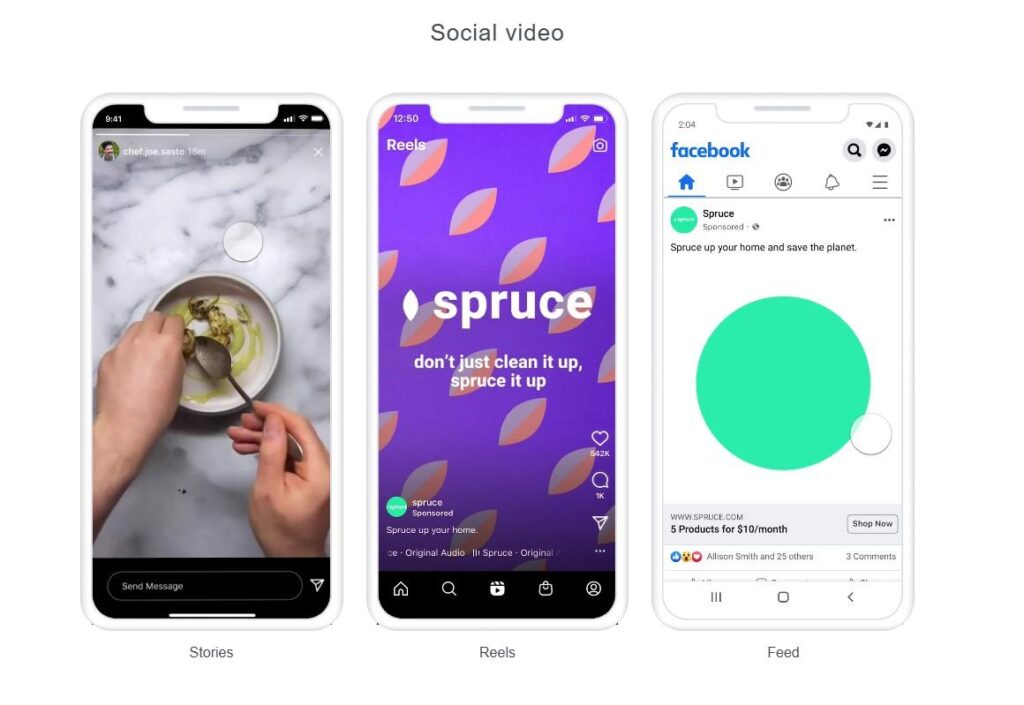
Reels: Vertical videos (9:16) offering a full-screen, immersive experience for quick, engaging content.
Stories: Vertical videos (9:16) that capture attention in a format designed for short, impactful messaging.
Feed: Square videos (1:1) work best in the News Feed and Instagram Feed, maximizing space on mobile device screens.
Along with the aspect ratio, you also need to think about the length of your video ads. People scroll fast, so keep your ads short.
According to a Databox study, short video ads and images consistently perform best for agencies and SMBs:
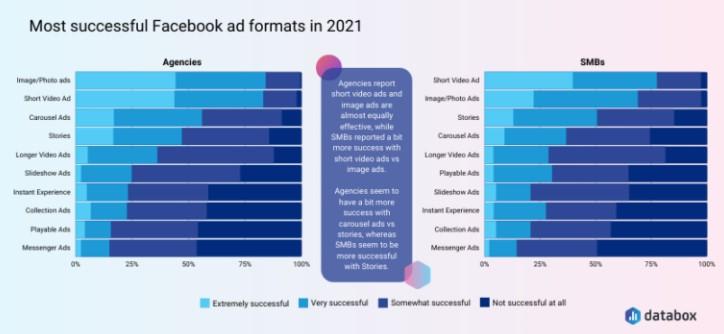
Most people are going to watch your ad on their smartphone. And most people are going to do so without the sound.
Around 75% of users watch videos on mute, so make sure you add captions or text overlays to highlight key points and CTAs.
Step 2: Hook Your Audience in the First 3 Seconds
The first three seconds of your Facebook video ads are everything. If you don’t grab attention fast, users will scroll right past.
A recent study revealed video retention on Facebook plummets after just a few seconds, so you need a hook that hits hard.
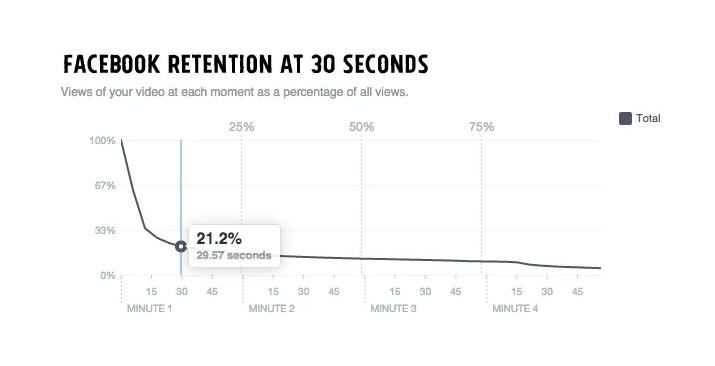
One way to do this is to agitate a pain point. You want to be super specific and bold.
For example, a hook like “The #1 mistake costing parents their sleep—and how to fix it tonight” immediately resonates with anyone dealing with that problem.
By highlighting a pain point, you create an instant connection and a reason for them to keep watching.
Curiosity can also work.
Lead with an intriguing result or statement that makes viewers want to know more. For example, “This one Facebook ad trick boosted my ROI by 300%. Here’s how” teases value without giving everything away.
Nail your hook, and you’re already halfway to creating a winning ad.
Step 3: Script Your Video for Maximum Impact
A strong script is essential for a high-performing Facebook video ad. Without clear structure, viewers lose interest fast.
Here’s a Facebook video ad template script to guide them from curiosity to conversion in less than 60 seconds:
Start with a Killer Hook
We’ve already covered the hook.
Make sure you grab attention in the first three seconds with a bold statement, intriguing question, or surprising fact.
Identify the Problem
Show you understand their challenge. Call out pain points clearly and specifically.
For example: “Struggling to track ad performance after iOS 14? You’re not alone, and it’s costing results.”
Introduce Yourself
Once you’ve hooked them, explain why they should trust you. The goal is to build credibility and reassure them that you can deliver.
For example: “Hi, I’m Sarah. I’ve helped 500+ businesses create ads that convert.”
Offer Your Solution
Position your product as the answer to their problem. Focus on benefits that resonate with your audience.
For example: “Master Facebook ads in 2025 with my easy-to-follow guide. Go from trial and error to consistent success.”
End with a Clear Call to Action
If viewers are still watching, they’re interested. Tell them exactly what to do next.
Be direct and add a sense of urgency.
For example: “Click the link below to get your free guide today and start seeing results tomorrow.” Words like “now” and “today” encourage immediate action.
Every part of your video script has a purpose: grab attention, build trust, and drive action.
Step 4: Make Your Video Look Professional
You need high-quality video ads to stand out on Facebook.
But here’s the thing.
Producing quality videos isn’t easy. From planning to editing, there’s a lot that can go wrong without the right skills or tools.
According to a Statista study, 43% of marketers cite a lack of in-house skills as a major obstacle to video marketing success.
Leading challenges of video marketing according to content marketers:
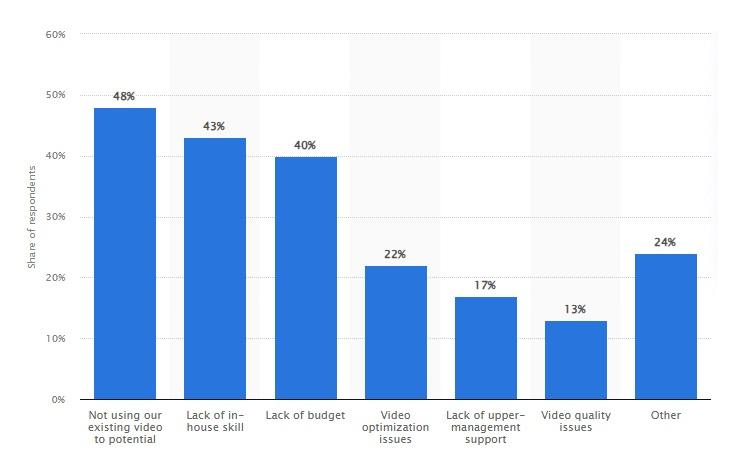
That’s why outsourcing video ad creation is often a better solution.
You can hire experts to handle scripting, production, and editing.
The result?
Your ad looks polished and professional. And they generate more conversions.
Step 5: Choose the Right Objective for Your Campaign
Your campaign objective tells the Facebook advertising algorithm what you want to achieve.
This helps the platform make sure your ads are shown to people most likely to take the desired action.
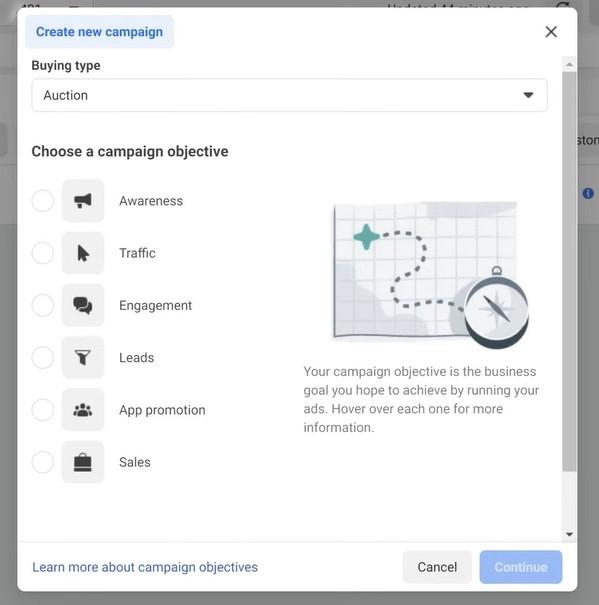
Awareness
Promote your business to a wider audience and increase visibility.
Traffic
Encourage users to click through to your site or landing page.
Engagement
Focus on likes, comments, shares, and other social interactions to increase visibility and build social proof.
Leads
Designed to generate leads by collecting user information directly from the ad.
App Promotion
Target users most likely to install or engage with your app.
Sales
Optimize for purchases or other high-value actions to maximize revenue.
To get the best results, match your ad creative to your goals.
For Awareness, keep it bold and simple. Use visuals and animations that grab attention and introduce your brand.
Then, retarget those viewers with Engagement or Traffic ads to encourage interactions or site visits. Storytelling or quick explainer videos can be a great way to drive clicks and build curiosity.
Finally, close the deal with a Conversions campaign to turn warm leads into paying customers. Use clean visuals, strong calls-to-action, and a sense of urgency to convert leads into customers.
Step 6: Target Smarter, Not Harder
The days of obsessing over hyper-detailed targeting are long gone. In 2025, Facebook’s AI does most of the work for you.
The best strategy is to keep it simple and let the algorithm do the heavy lifting.
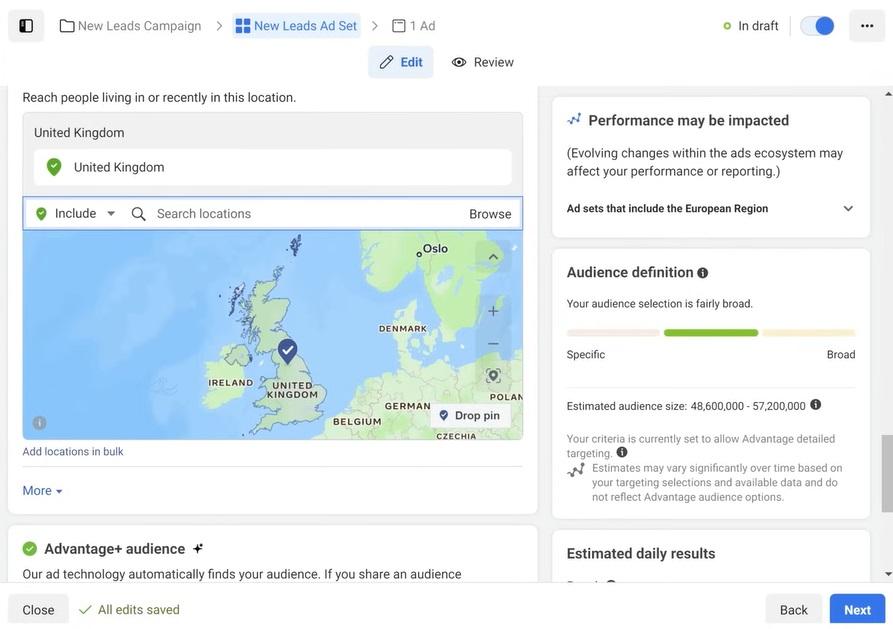
Stick to basics like age, location, gender, and broad interests.
Starting broad gives Facebook room to figure out the best target audience for your video advertising. For example, “18-45-year-olds interested in fitness” works better than adding every possible interest and behavior.
Once you’ve got some data, use Lookalike Audiences to narrow in on the right people.
Facebook can find people who are similar to your customers or website visitors. Start small with a 1-3% Lookalike Audience for accuracy. Then, expand to 5-10% to reach even more people.
You’ll also want to use retargeting to show ads to people who’ve already visited your site, added items to their cart, or watched most of your video.
Let Facebook’s AI do the hard work. Focus on making great video ads and a clear strategy.
Step 7: Analyze, Optimize, Repeat
Launching your Facebook video ad is just the beginning.
The best results come from tracking performance, making smart adjustments, and refining your approach to boost ROI. This ongoing process turns decent campaigns into exceptional ones.
If your ad isn’t working as well as you hoped, start with the creative. Try a stronger opening, better visuals, or a clearer message. If targeting isn’t hitting the mark, widen your audience and let Facebook’s AI help you find the right people.
Here are the key metrics to keep an eye on:
CTR (Click-Through Rate): A strong CTR (above 1%) means your ad grabs attention. If it’s low, revisit your hook or CTA to make them punchier.
Cost Per Result: High costs per lead or conversion? Test new audiences or placements to improve efficiency.
Engagement Rate: Likes, comments, and shares signal relevance. Aim for 3% or more. If it’s low, try injecting emotion or a relatable story into your content.
Facebook Tip:
Understanding metrics is key.
Example:
Low CTR’s & High CPC = Poor ads/product
High CTR’s & Low CPC’s but no sales = Website/pricing issue
Learn to act on data.
— Camm (@cjfeth) September 5, 2023
Every campaign is a test.
Run experiments with different video styles, lengths, or calls-to-action to see what works best.
Keep checking your results, trying new things, and making adjustments.
Let the data guide you, and you’ll keep improving over time.
Your Facebook Video Ads Playbook
You don’t need a huge budget or complex targeting strategies to succeed with Facebook video ads.
The best practices we’ve covered in this guide are a good starting point. But the best video ads come from staying curious and open to change.
Keep experimenting. Keep testing. Keep learning.
That’s how you maximize return on investment.
When you focus on connecting with your audience in fresh ways, you’ll be surprised at how far your campaigns can go.
Become a Pro at SEO
Join 65,000 others and learn the secrets to SEO success with our weekly blog posts.
